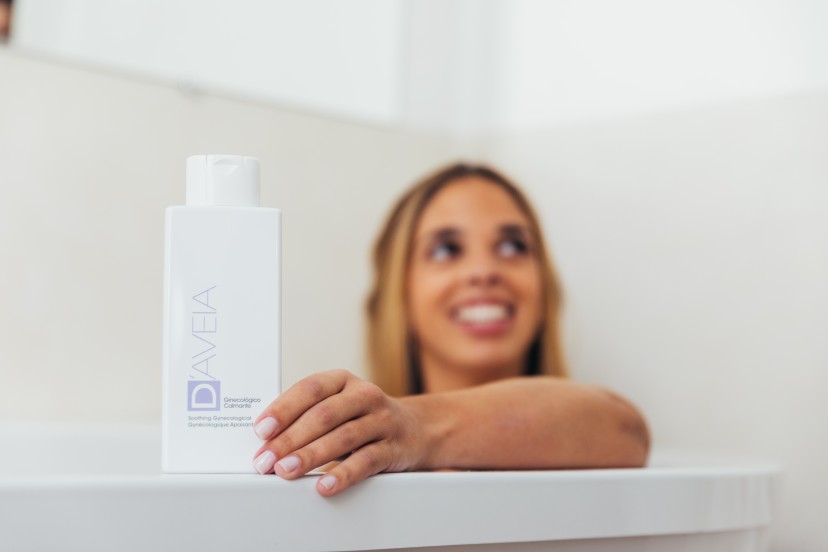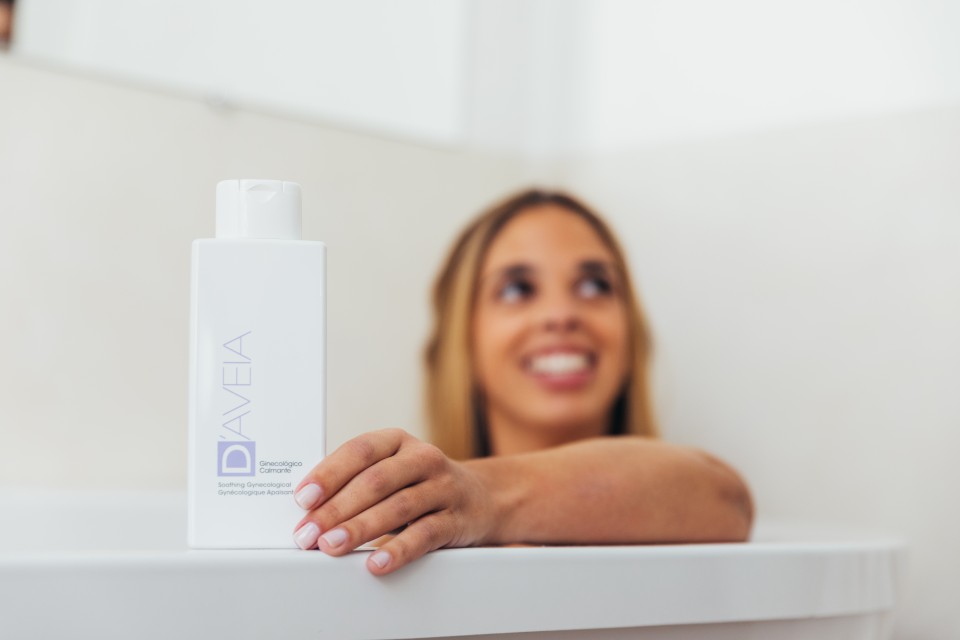Adequate daily intimate hygiene is essential to prevent the onset of burning, itching, irritation, redness and burning sensation in the intimate area.
However, it is essential to choose a product suitable for intimate hygiene, which contributes to maintaining and strengthening the physiological mechanisms of defense of the female genital area. The main defense mechanisms of this zone are pH and saprophytic flora.
In this article, learn all about the pH of the female intimate zone, its importance and why it is essential to use a product that has the ability to maintain it or restore it, when changed.
What is vaginal pH?
The pH (potential of hydrogen) is a unit of measurement, which determines whether the medium is more acidic or alkaline.
The pH scale ranges from 1 to 14. When the pH value is 7, the medium is neutral. If the pH is less than 7, this medium or solution is acidic, and if it is greater than 7, it is considered basic or alkaline.
All parts of the body have their own physiological pH, different from each other: for example, the pH of the skin is approximately 5.5 (slightly acidic) and the vaginal pH is about 4.5 in women of childbearing age.
The physiological pH of each part of the body must be respected and / or restored when changed. Thus, the hygiene and care products to be used on the skin and in the intimate area cannot be the same, since the product must have a pH compatible with the area of the body where it is intended to be applied.
How important is vaginal pH?
From puberty, hormonal production of estrogens starts, which lead to the release of lactic acid. This lactic acid is very important, as it will acidify the intimate area, lowering its pH to 4.5.
This pH, which is the physiological pH of women's intimate area at childbearing age, is an essential condition, because it promotes the development of bacteria, fungi and other beneficial microorganisms (the so-called “saprophytic flora”), which prevent the development of harmful microorganisms and thus protect the intimate area.
If this physiological pH changes, an environment conducive to the growth of harmful microorganisms in the intimate area can easily be created. That is why it is so important to respect and maintain it.
How does vaginal pH vary during a woman's life?
The physiological vaginal pH varies throughout a woman's life:
- In the newborn, the pH of the intimate area is acidic (4-5) due to the effects of maternal estrogens, inherited from the mother.
- During childhood, the skin in the intimate area is very thin and unprotected. There is still no production of estrogens, so the pH of this area is still alkaline (above 7).
- From puberty to menopause, with the start of estrogen production, the pH of the intimate area becomes acidic (4.5). The presence of beneficial microorganisms (developed saprophytic flora) that produce lactic acid protects this area against external contamination and infections at this stage of life.
- During pregnancy, due to the increased concentration of estrogens, there is a certain hyperacidity in the intimate area (the pH can drop to 3.5), which can lead to some symptoms of burning and occasional itching;
- In menopause, due to the cessation of estrogen production, the pH increases and can become alkaline.
How to restore the pH of the intimate area when it is altered?
Sometimes the pH of the woman's intimate area changes. This is mainly due to some factors such as:
- Hygiene with inappropriate products that alter the vaginal physiological balance, with aggressive chemical surfactants or pH different from the physiological pH of the intimate area (pH 4.5);
- Antibiotic treatments for a long time or weak states of the immune system;
- Taking certain oral contraceptives;
- Use of sanitary towels or tampons with an occlusive effect and synthetic underwear;
- This change in pH can trigger the development of harmful microorganisms, which leads to the appearance of symptoms of itching, redness and burning sensation in the intimate area;
- In order to restore the pH of the intimate area and relieve these symptoms, it is essential to use appropriate hygiene and intimate care products, which restore the physiological pH, as well as the Saprophytic Flora of the genital area;
- The products to be used when there are these symptoms of irritation, itching and redness must then have a slightly alkaline pH, to decrease the hyperacidity characteristic of this type of situation and thus restore the physiological pH.
What pH to choose for your intimate hygiene solution?
You should choose your personal hygiene product according to the stage of life you are in:
For daily intimate hygiene of the girl, since leaving the diaper until the first menstruation, you should select a product that respects and reestablishes the physiological balance and the physiological pH of the girl's external intimate area, slightly alkaline or basic - above 7 - reinforcing the natural defenses against external contamination and that simultaneously exerts an anti-irritant and anti-inflammatory action, thus allowing to alleviate some symptoms that may be present such as burning sensation and itching.
For the daily intimate hygiene of women from adolescence and throughout the fertile phase, we should look for a product that respects the physiological balance of the external intimate area, and that has a pH equal to the physiological pH of the intimate area, which at this stage is acidic ( about 4.5) and keep the saprophytic flora. It must have the capacity to restore the ecosystem of the external intimate area when altered and still restore the ability of this area to defend itself against external contamination.
If you have symptoms of itching, redness or a burning sensation in the intimate area, it means that the pH of this area is altered. In this case, it is essential to use appropriate hygiene and intimate care products, which restore the physiological pH, as well as the saprophytic Flora of the genital area.
They should have a slightly alkaline pH, to decrease the acidity characteristic of this type of situation.
They should also promote the relief of symptoms, that is, reduce redness and irritation, the sensation of burning and itching and simultaneously exert a calming and protective action.
Is there a product in the D’AVEIA line with an adequate pH for daily intimate female hygiene?
Within the D'AVEIA line, there is a range of products for feminine intimate hygiene, specifically formulated and with a pH compatible with the pH of the woman's intimate area at each stage of life:
Since the girl leaves the diaper until the 1st menstruation: D'AVEIA Pediatric Intimate Care, with slightly alkaline pH (> 7). developed for the girl's daily intimate hygiene, responding to all her needs.
Contains the basic ingredients of the D’AVEIA line, promoting gentle and delicate hygiene. Maintains the physiological balance of the external intimate area, reinforces natural defenses.
With moisturizing, emollient, anti-irritant and soothing action, relieving the symptoms of vulvovaginitis and preventing its appearance.
Indicated in the daily intimate hygiene of the girl since leaving the diaper until puberty. Relieves the symptoms of vulvovaginitis.

For women of childbearing age: D'AVEIA Gynecological, with acid pH (4.5), equal to the physiological pH of the woman's intimate area.
Contains Colloidal Oats, which washes through a physical mechanism that removes dirt without changing the skin's natural protection. In addition it has a moisturizing and emollient action and also contains rice, with moisturizing, emollient, protective and antioxidant properties.
Indicated in daily hygiene of women of childbearing age, including pregnancy, postpartum and breastfeeding.

In cases of itching, burning, redness and burning sensation in the external intimate area: D’AVEIA Soothing Gynecological, with pH (8), ideal to reduce the hyperacidity that is generated when this type of discomfort exists. In this way, it restores the physiological pH of the intimate area and quickly relieves the symptoms.
Contains colloidal oats, rice and corn, combined with allantoin, betaine and other ingredients of natural origin, they also have a hydrating, smoothing, regenerating and protective action on the external genital area.
Indicated in the woman's intimate hygiene when there are symptoms of itching, burning, redness and burning sensation in the external genital area or on a daily basis in women predisposed to these symptoms.

You should always complement the treatment with the application of a local topical treatment, for application to the external genital area: D’AVEIA Intimate Soothing gel, with an exclusive form with pre and probiotics. Learn more about this product here
FAQS
What is vaginal pH?
The pH is a unit of measurement that determines whether the genital area is acidic (pH <7) or alkaline (pH> 7). At childbearing age, the woman's vaginal pH is acidic (4,5).
How important is vaginal pH?
Vaginal pH is essential to maintain physiological balance and prevent the appearance of changes in the intimate area.
How does vaginal pH vary over a woman's life?
Before the 1st menstruation, the pH of the intimate area is alkaline. From the 1st menstruation to menopause it becomes acidic (4,5)
How to restore the pH of the intimate area when it is altered?
In this situation, it is recommended to use hygiene and intimate care products with alkaline pH.
What pH to choose for your intimate hygiene solution?
You should choose an intimate hygiene product that has an acidic pH (4.5) if you are of childbearing age and with an alkaline pH (> 7) for the girl before the 1st menstruation.
Is there a product in the D’AVEIA line suitable for daily intimate female hygiene?
Yes! D’AVEIA intimate pediatric care for the girl until the 1st menstruation, and D’AVEIA Gynecological for the woman of childbearing age. When there are symptoms of itching, irritation and burning in the intimate area, it is recommended to use D'AVEIA Soothing Gynecological.











